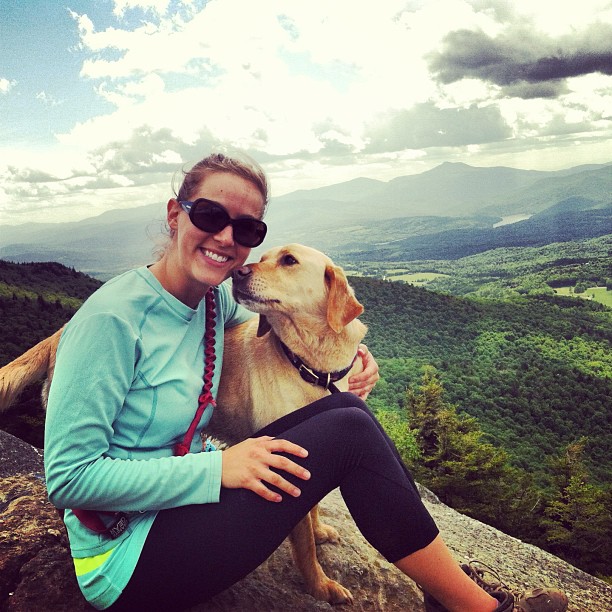Looking to escape your hometown haunts for a wilderness hike? Don’t forget your pooch! Dogs love to explore our country’s vast natural resources as much their two-legged counterparts—not to mention, hiking is great exercise for all. But remember, a hiking trail isn’t your average walk around the block. The ASPCA offers some helpful tips for keeping you and your pet safe and sound on your outdoor adventures.
- Extending leashes are great for wide open spaces, but if your romp is taking you through wooded areas, it’s best to leave the flexi-leads at home. Otherwise, you’ll probably spend more time untangling your dog’s leash from trees and brush than you will enjoying your walk!
- If your pup is the trustworthy sort and you want to give him the opportunity to enjoy some untethered time on your hike, first make sure that dogs are allowed to be off-leash in the area you’re exploring. Second, be sure that he responds reliably to your recall command—even the most obedient dog might bolt after some fascinating new critter.
- Hard to believe, but not everyone is as enamored with dogs as we are! Some people get very nervous around unleashed dogs. As a courtesy, have a leash on standby to clip to your dog when encountering other hikers.
- Whether you’re using a leash or not, don’t forget IDs, please! Always make sure that your current contact information, including your cell phone number, is attached to your dog’s collar or body harness. If for any reason your pet gets lost, a collar and tags and a microchip will increase the likelihood that he or she will be returned to you.
- You never know what you may encounter on a hike—so before setting out into the wilderness, check your pet’s veterinary records and make sure his vaccinations are up-to-date.
- Training tip: Teach your dog to come to you for treats whenever you pass by other hikers, especially if they have dogs, too. Your dog will learn to not interfere with passersby, and at the same time, you’re ensuring he associates new people and dogs with good things, like tasty treats from you.
- If a poop falls in the woods and no one else sees it, do you get a free pass? NO! There’s no such thing as a victimless poop. Please have respect for your surroundings, native wildlife and fellow hikers by scooping up after your dog and toting the baggie back to civilization if there are no trash cans around.
- Both of you need to stay hydrated, so bring enough water for two. Don’t allow your pup to drink from puddles, ponds, lakes or streams—in other words, “nature’s dog bowls”—as they may contain nasty parasites or toxins that could cause her harm.
When your hike is finished, give your pooch a thorough once-over for ticks and other creepy-crawlies. Pay special attention to her belly, ears, and any skin folds and crevices. If you do spot a tick, treat the area with rubbing alcohol and remove the parasite immediately by slowly pulling it off with tweezers. Be careful when removing a tick, as any contact with its blood can potentially transmit infection to your dog or even to you. Wash the bite area and keep an eye on it for the next few days—if irritation persists, contact your vet.
Written by: ASPCA
Find the article here: http://www.aspca.org/pet-care/dog-care/hiking-safety-tips

